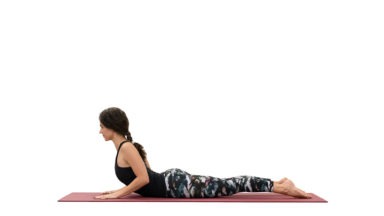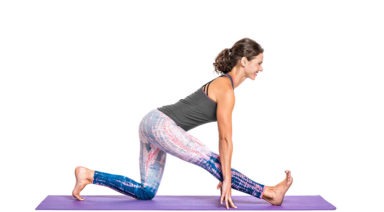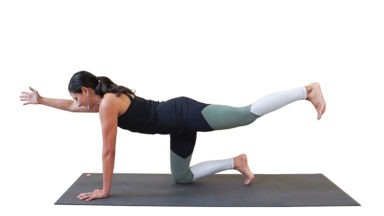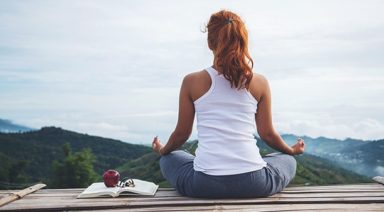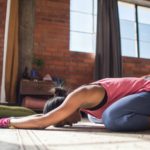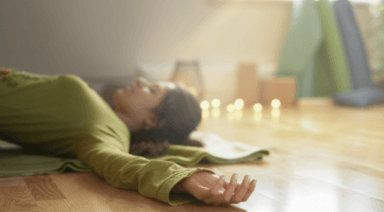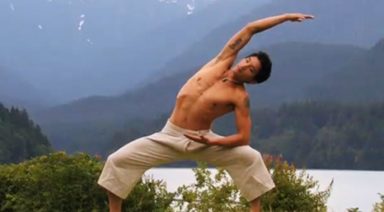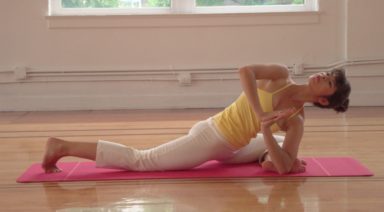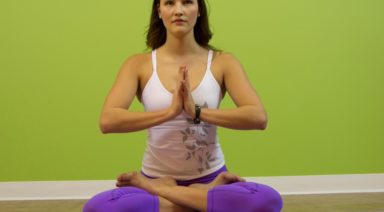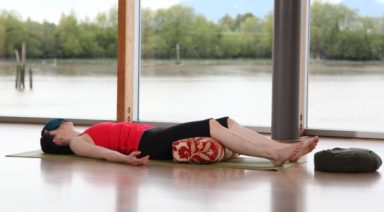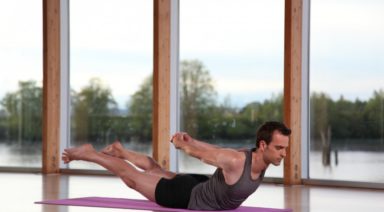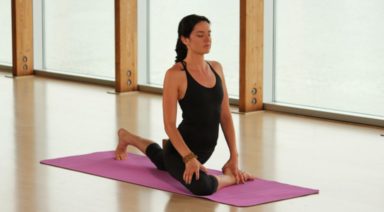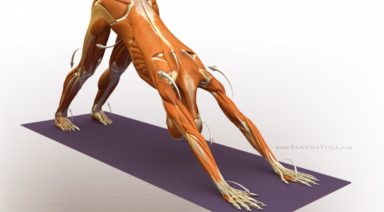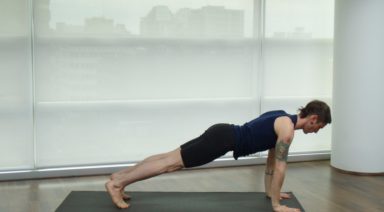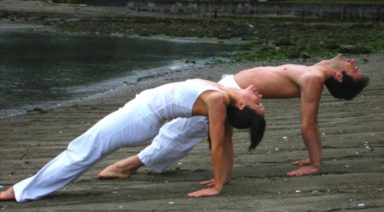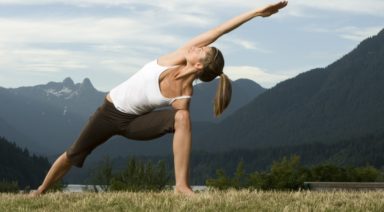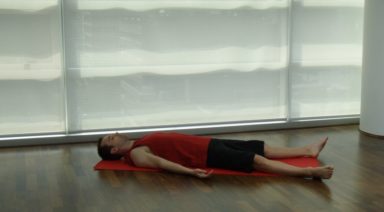Prasarita Padottanasana: Standing Wide-Legged Forward Bend Pose

ADJUSTMENTS | BENEFITS | SEQUENCING | SANSKRIT | STEPS
Prasarita padottanasana (pra-sa-REE-tah pah-doh-tahn-AHS-an-uh) is a big stretch for the hamstrings and inner leg line. With many variations available, this pose is accessible for most practitioners. This is also a great pose in lieu of headstand.
Philosophy + Origin
Prasarita padottanasana has found its way into almost every style of yoga. B.K.S. Iyengar taught several variations of this posture, labeling them as A, B, C, and D. The most commonly practiced variation is prasarita padottanasana A. Prasarita padottanasana B is when the hands are on the hips and the head is lifted off the ground, not resting on the mat. Prasarita padottanasana C is the variation where the hands are interlaced and stretched behind the back and over the head as you fold. In the final variation taught by Iyengar, prasarita padottanasana D asks the student to grasp the big toe on each foot.
ADJUSTMENTS/MODIFICATIONS:
- Place a pillow, bolster, or chair under your head to bring the ground closer to you.
- Option to place blocks or a chair under your hands.
STEP-BY-STEP:
- Begin standing facing the long edge of your mat. Step your feet about four feet apart (it will vary slightly depending on your height) and place your hands on your hips. Look to your feet and check that your middle toes are facing the same direction.
- Lift your kneecaps up to engage your thigh muscles. As you inhale, extend through your chest. As you exhale, begin to hinge forward from your hip creases, keeping the front of your torso long.
- Pause when you find your torso parallel with the floor. Press your fingertips firmly into the floor, hands directly below the shoulders. Straighten your arms so that they are parallel to the floor, just like your legs.
- Keep the torso long and start to walk your fingertips back toward your legs so that they are between your feet. Bend your elbows and allow your torso and head to drop into a full forward bend. If accessible, place the crown of your head on the floor between your feet.
- Use the palms of your hands to press into the floor. If your body allows, continue to move your hands back, fingers facing forward, until your upper arms (triceps and biceps) are parallel with the mat. Allow the breath to broaden your shoulder blades as you encourage your shoulders to lift away from your ears.
- Hold this pose for up to 60 seconds. When you’re ready to release, walk your hands forward so that they are under your shoulders and your torso is once again parallel with the floor. Use an inhale to lift up completely, hands on hips. Return to standing.
PREPARATORY POSES:
- Downward-facing dog | Adho mukha svanasana
- Goddess pose | Utkata konasana
- Frog pose | Mandukasana
SEQUENTIAL POSES:
- Seated wide-legged forward bend | Upavista konasana
- Extended side angle | Utthita parsvakonasana
- Firefly pose | Titibhasana
COUNTER POSES:
- Half lord of the fishes | Ardha matsyendrasana
- Half pigeon pose | Eka pada rajakapotasana
BENEFITS:
- Strengthens legs and back.
- Stretches groins, hamstrings, and hips.
SANSKRIT:
- Prasarita = stretched, expanded
- Pada = foot
- Ut = intense
- Tan = to extend
- Asana = pose
Legal Disclaimer Before participating in any exercise program or using any fitness products or services that may be described and/or made accessible in or through the Gaia Website and/or the Services, you should consult with a physician or other healthcare provider. Read more about Gaia’s Terms Of Use.
Bhujangasana: Cobra Pose

ADJUSTMENTS | BENEFITS | SEQUENCING | SANSKRIT | STEPS
Bhujangasana (boo-jang-GAHS-anna) is a great way to strengthen the upper back and is often practiced as part of a transition back to downward-facing dog in vinyasa yoga. Practicing cobra pose regularly can improve your lung capacity, reduce stress, and stimulate many of the internal organs in your body.
Philosophy + Origin
Although often perceived as evil or dangerous, snakes also have a rich history of power and worship. In some yoga traditions, the energy of kundalini is represented by a serpent resting coiled at the base of the spine. By awakening this snake, we enliven our body’s energy and create a pathway towards enlightenment. This connection with enlightenment is also seen in many portrayals of the Buddha where he is shown with a cobra over his head.
ADJUSTMENTS/MODIFICATIONS:
- Option to swap cobra pose for sphinx pose by placing your forearms on the floor.
- Lengthen the back of the neck to avoid straining the neck and upper back.
- If you experience discomfort in the lower back, bend the elbows more.



